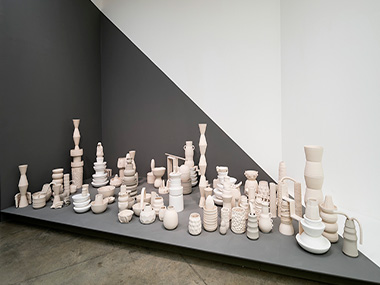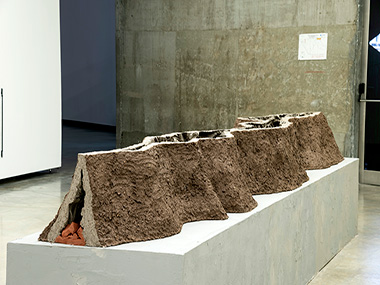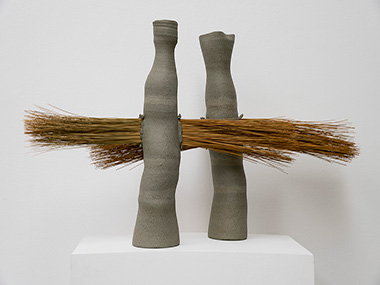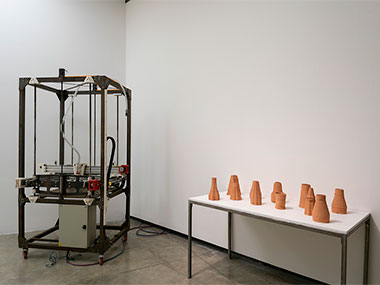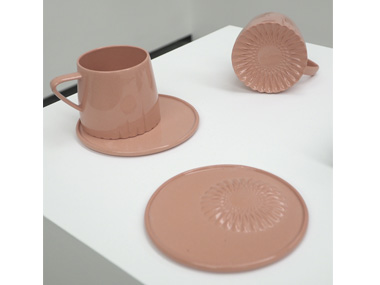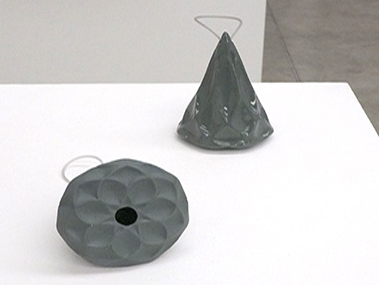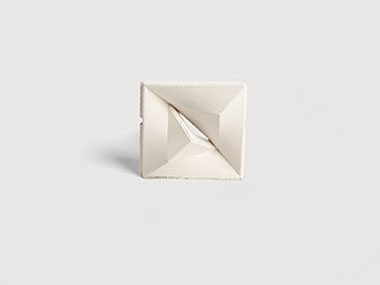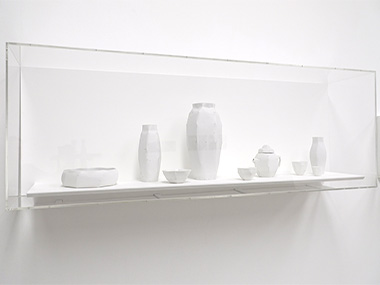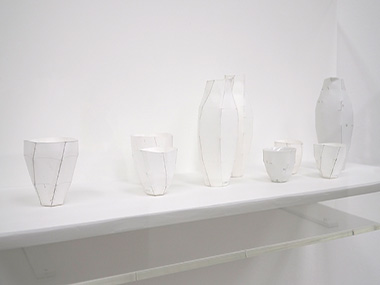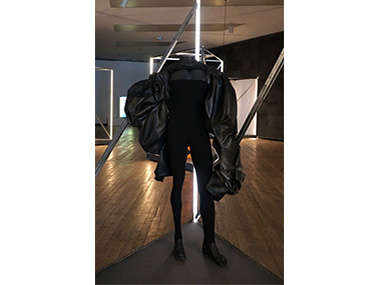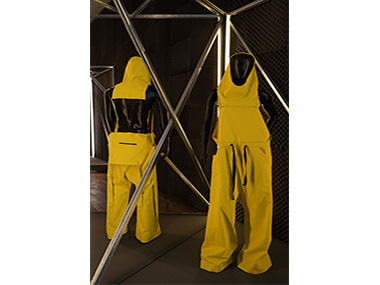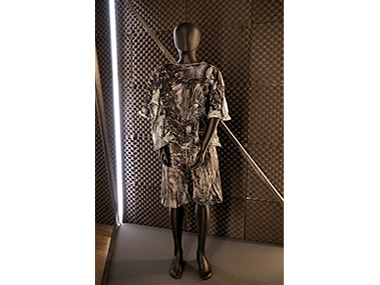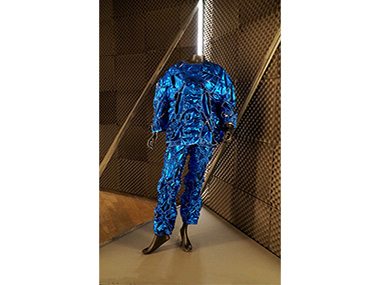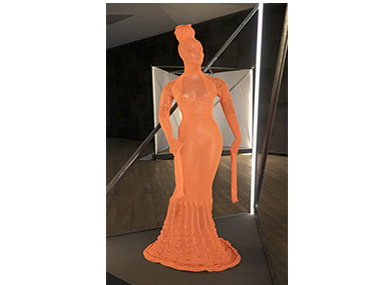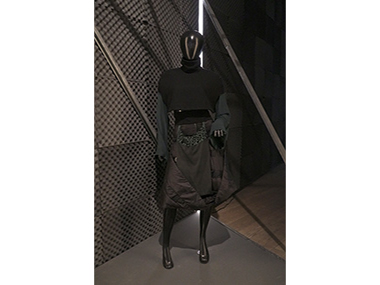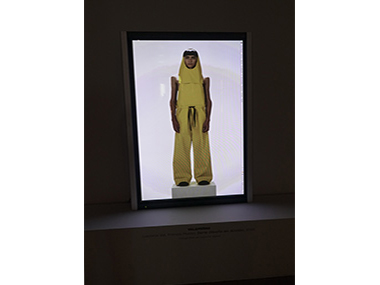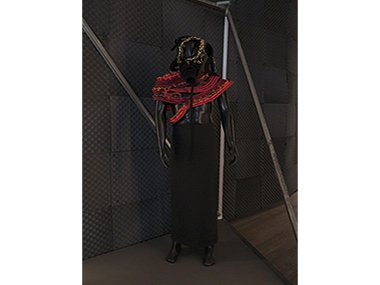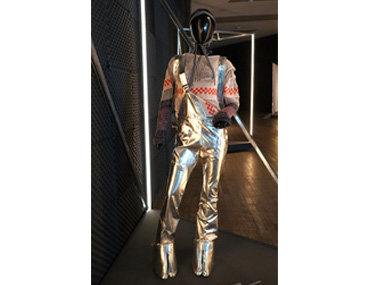ARCHITECTURE
Towards an Agenda
By Martín Huberman
“How can Legislation be considered as a proactive instrument for design rather tan an obstacle”.
Arno Brandlhuber
Legislating Architecture, documentary, 2016
With its slogan “Living Better is now Law”, the Legislature of the City of Buenos Aires lays bare the absolute influence that legislation exerts on our living standards. However, laws are never discussed nor written in accessible language but rather in a technical legal jargon that masks political and economic agendas. Be it through the theatrical parliamentary grandiloquence with which they are debated, through the contrived terms of their writing or, lastly, through their veiled albeit true nature as backstage agreements, laws as formal structures lose part of their fundamental duty to represent the public wellbeing. Flashy titles are a first attempt to rectify that representative gap: language only becomes accessible when used as political propaganda. Laws are thus publicized with names that promise transformative capacities of unrealistic reach and ideal solutions that coordinate concrete problems with hidden agendas.
A law only comes into effect when its application is crystallized in everyday life, sometimes through professional interpretations that take control of the design of their implementation, sometimes through mere spasms of pure individualistic opportunism that exploit legal loopholes. Broadly speaking, the constructed environment of our city is settled through the intense toing and froing between obedience and disobedience of the law, through the friction between political agendas, the structures of speculative capital and domesticity as a reaction to those powers.
The various disciplines of design seem trapped inside this choreography, in a local context that flattens them out as mere saving, investment and consumption goods, and that keeps them away from political, cultural and social discussion. As a discipline, design holds nonetheless a unique value: its ability to project and construct our environment by using our rights to model space, transforming norms into uses, and turning void into opportunity. It is thus fundamental to build our own professional agenda in order to regain a voice that expresses political determination, and to put aside our role as mere executors of external agendas and become again the builders of our own future.
This exhibition is an attempt to participate in the debates of this new agenda by working on three legislative examples that govern the future of our domesticity: the new Building Regulation for the City of Buenos Aires, the Zero Waste Regulation, and the recent Distributed Generation Law. The curation focuses on the experimental exercise of Design as a generator of critical thought, with the aim of taking a definite step towards the redefinition of local professional practice. The selected works challenge the different languages and mechanisms of design, such as research, photography, representation, illustration, prototyping, communication and the pure definition of constructed space.
Why are projects always presented with such rabid, sunny and quasi perfect optimism? What naïve truth of our homely environment are we illustrating and photographing?
–
Ley 1854 - Ley de Basura Cero
``The street emerges as a site in which architecture´s wastes disappear into non-urban space. Gutters, sewers and the upper atmosphere convey urban pollution elsewhere´´.
La calle emerge como un lugar en el que los desechos de la arquitectura desaparecen en el espacio no urbano. Las alcantarillas y la atmósfera superior transmiten la contaminación urbana a otra parte
David Gissen, A Theory of Pollution, 2012
La Ley de Basura Cero (2006), mediante la cual la Legislatura de la Ciudad de Buenos Aires articuló el nuevo esquema de separación y manejo de los residuos domésticos y urbanos, es un claro ejemplo de la distancia entre ley y aplicación.
En su nombre la ley pondera un escenario utópico en el que la basura se asocia al Cero, sugiriendo que en algún momento podemos dejar de producirla.
El título, en formato propaganda, simplifica y hasta invisibiliza el problema, en lugar de trabajar en pos de un entendimiento responsable sobre aquello que generamos a diario y su inevitable repercusión en el entorno urbano y el medio ambiente.
La basura es la principal producción doméstica y uno de los aportes más críticos que hace la esfera privada a la pública. Como dice Gissen, la vereda, como primer registro público, tiene la fuerza suficiente para enajenar aquello que en ella depositamos, haciendo parecer que todo lo que se encuentra fuera de casa, pasa a ser un problema ajeno, distante e impersonal. Lo público es de todos y a su vez no es de nadie.
Sin embargo, la basura siempre está, ya sea en bolsas asépticas, en volquetes de obra, en contenedores desbordados, o bien en un futuro cercano en el aire de la ciudad, diseminada en cenizas contaminantes producto de su combustión.
En el 2018 la Legislatura modificó la ley, al ver que los objetivos planteados originalmente quedaban truncos y que el sistema iba camino a una inevitable saturación. La reforma permite la ?termo-valorización? de la basura, un eufemismo político para enunciar la incineración de residuos sólidos como método final de descarte. Lejos de legislar en pos de la reducción de la producción de basura y proyectar hacia un ecosistema menos contaminante, la Ley hoy pondera como solución la generación de energía basada en la combustión de la basura, una fuente que no es considerada limpia, ni renovable.
Es fundamental que la práctica abogue en el diseño de una agenda que establezca una nueva estética de la basura, generando el estado de conciencia necesario para evidenciar la responsabilidad que tiene nuestra vida doméstica sobre los problemas ambientales que nos aquejan. Es en la visibilización y reconstrucción de nuestro entorno doméstico en los cuales nuestros desechos son parte, que esta muestra da un paso hacia romper el vínculo innegable del diseño con el círculo vicioso en el que la basura que producimos nos vuelve en contaminación, para experimentar en nuevas formas de enfocar la profesión hacia escenarios virtuosos como el de la economía circular.
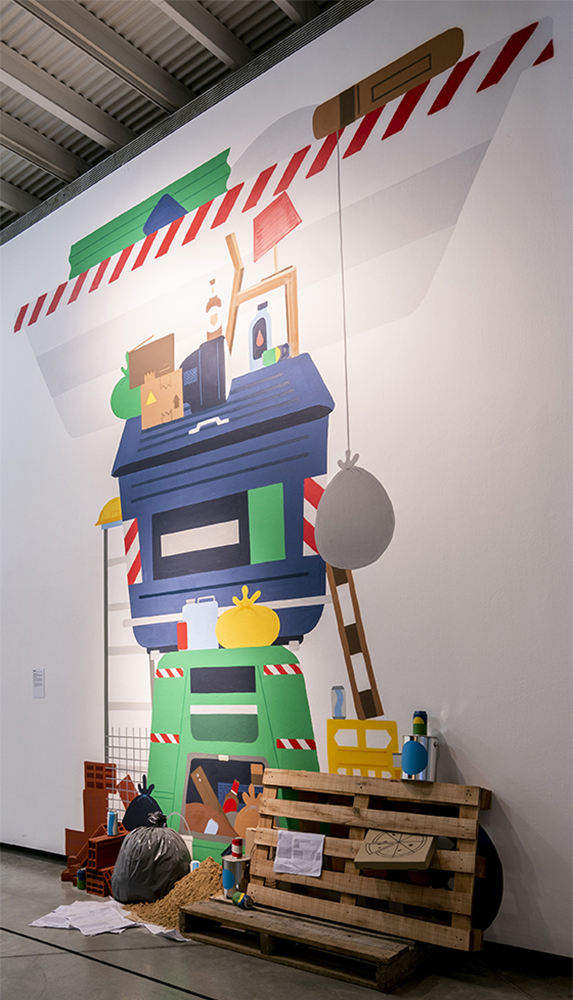
HUESO. Santiago Moncalvo, Gianluca Fallone
Vereda, 2017-2019. Ilustración digital en aerosol, esmalte al agua y fibrones de pintura acrílica © Edu Loogia. Realizaciones por Leonor García Vercillo y Diego Cinalli
Fernando Schapochnik
6m3, 2019. Fotografía digital color, serie de 8 fotografías; 104 x 80 cm c/u.
Colaboración: Juan Bernardo Ramírez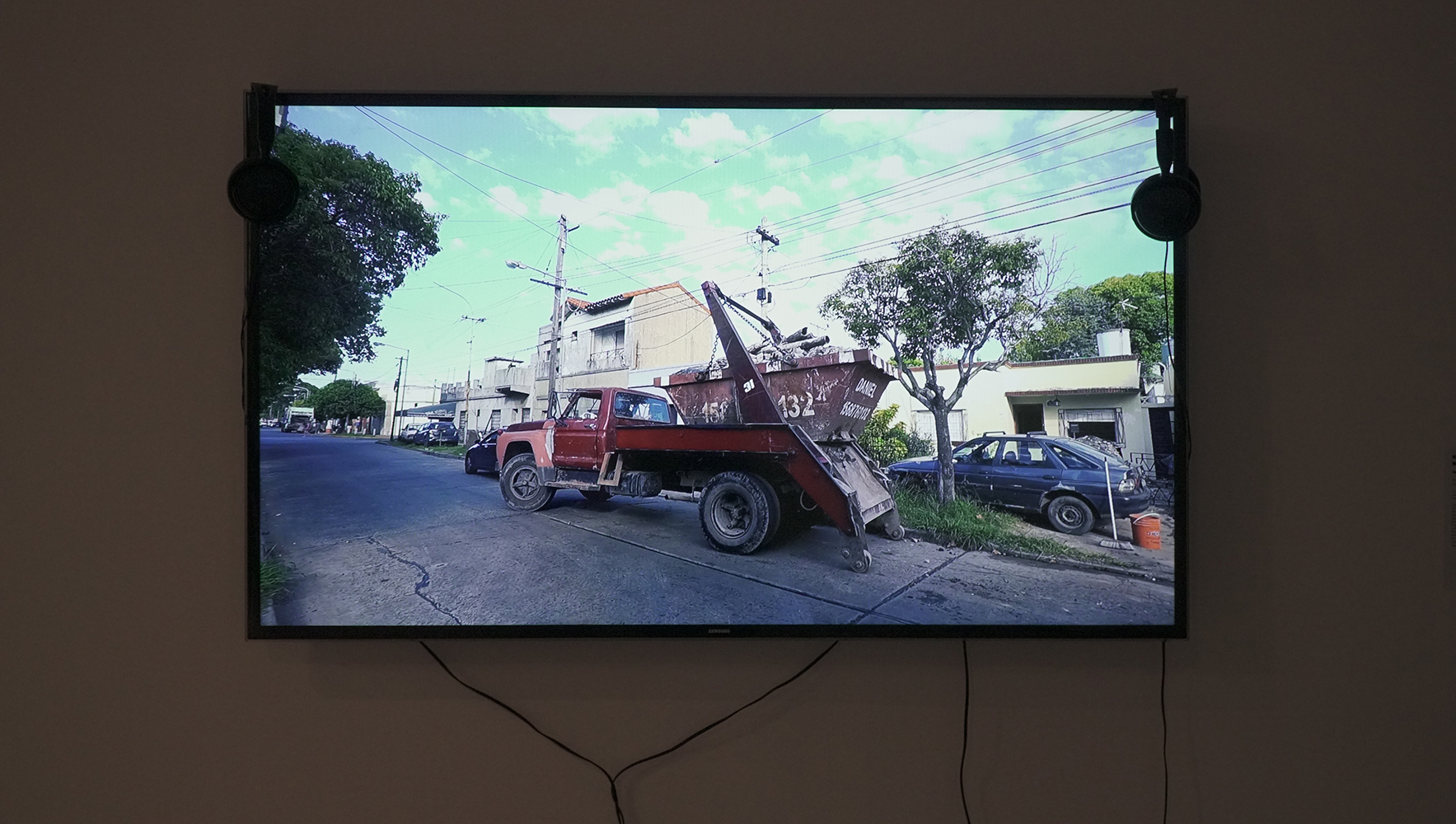
Nacho Unrrein, Hernán Pedrós
Todo lo que no sirve, proyecto, 2019. Video digital; 5 en loop.
Colaboradora: Sofía Zappacosta
Ver video
NUMEROS PRIMOS. Miguel Echevarria, Francisco Mira
Colección Ego-Lógica, 2019. Compostera doméstica.
Estructura de acero fabricada mediante corte láser, contenedores de acero
inoxidable y detalles en plástico; h43 x 45 x 34 cm.
Colaboradores: Pedro Percivaldi, Camila Sugameli.

NUMEROS PRIMOS. Miguel Echevarria, Francisco Mira
Colección Ego-Lógica, 2019. Vela y soporte
Vela a base de aceite de cocina reciclado y estearina, soporte en chapa de acero con corte láser; 8 x Ø8 / 10 x Ø6 / 6 x Ø8 cm.
Colaboradores: Pedro Percivaldi, Camila Sugameli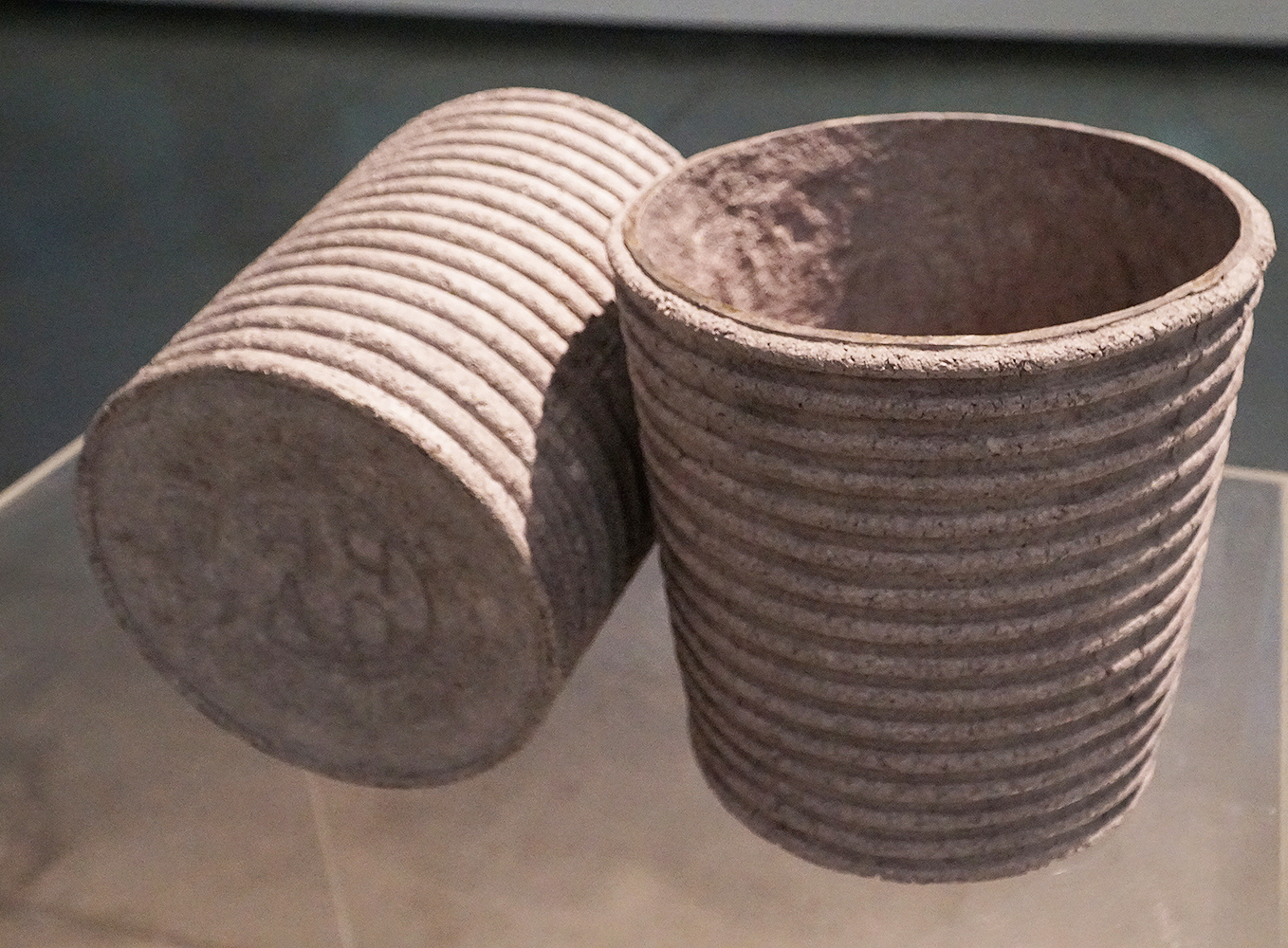
NUMEROS PRIMOS. Miguel Echevarria, Francisco Mira
Colección Ego-Lógica, 2019. Tacho de basura
Papel reciclado con aglutinante vinílico; 36 x Ø31 cm.
Colaboradores: Pedro Percivaldi, Camila Sugameli
Law 6,100 - 18 - New Building Regulation for the City of Buenos Aires
In the realm of public policy (?) the implicit or explicit assumption has been, or continues or for the most part continues to be, that architecture and design are for those who can afford it; that architecture and design exist in the realm of desire rather tan need.
Linda Pollak
Architecture as Infraestructure for Interactivity: The Need for Desire
Towards the end of 2018, the Legislature of the City of Buenos Aires approved the new Urban Planning and Building Codes. Both present new strategies for growth and densification which, among other things, look to double the city?s population in the near future. One of the most striking points of the new law is that it authorizes a new minimum size dwelling: the 21 m2studio apartment. This new type significantly reduces the minimum surface area for dwellings, which previously could be anywhere from 27 m2 to 32 m2.
This contraction towards micro-households is a drastic turn in the already tense relationship between domestic and urban spaces. The formalization of private space within the realm of what is minimal and sufficient, where the only viable activities are sleeping, bathing and eating, means that public space will become overcrowded with all our remaining daily necessities. The city will have to absorb a big part of our domestic needs, which comprise all non-basic activities such as study, leisure, entertainment, recreation, among others.
While the Law promises to expand access to housing for first-time renters and buyers, it disregards the responsibilities and consequences entailed by this transition from the studio apartment to the environment. The law has no plan or legislation for new domestic scenarios affected by this special setting, making it clear that it is driven by an economic, real estate and fiscal agenda rather than a social one that can offer better living conditions.
The works in this first section of the room reveal the interstice between the dictates of the law and the actual development of a new domesticity. Illegal windows, party walls that become building facades, metaphors that serve as selling strategies and even language itself as a spatial abstraction are just some of the relational systems that make up this new living environment. We must study, emphasize and reconstruct them in order to construct a professional agenda and thus regain a say in the process of decision-making that builds up our city from inside out.
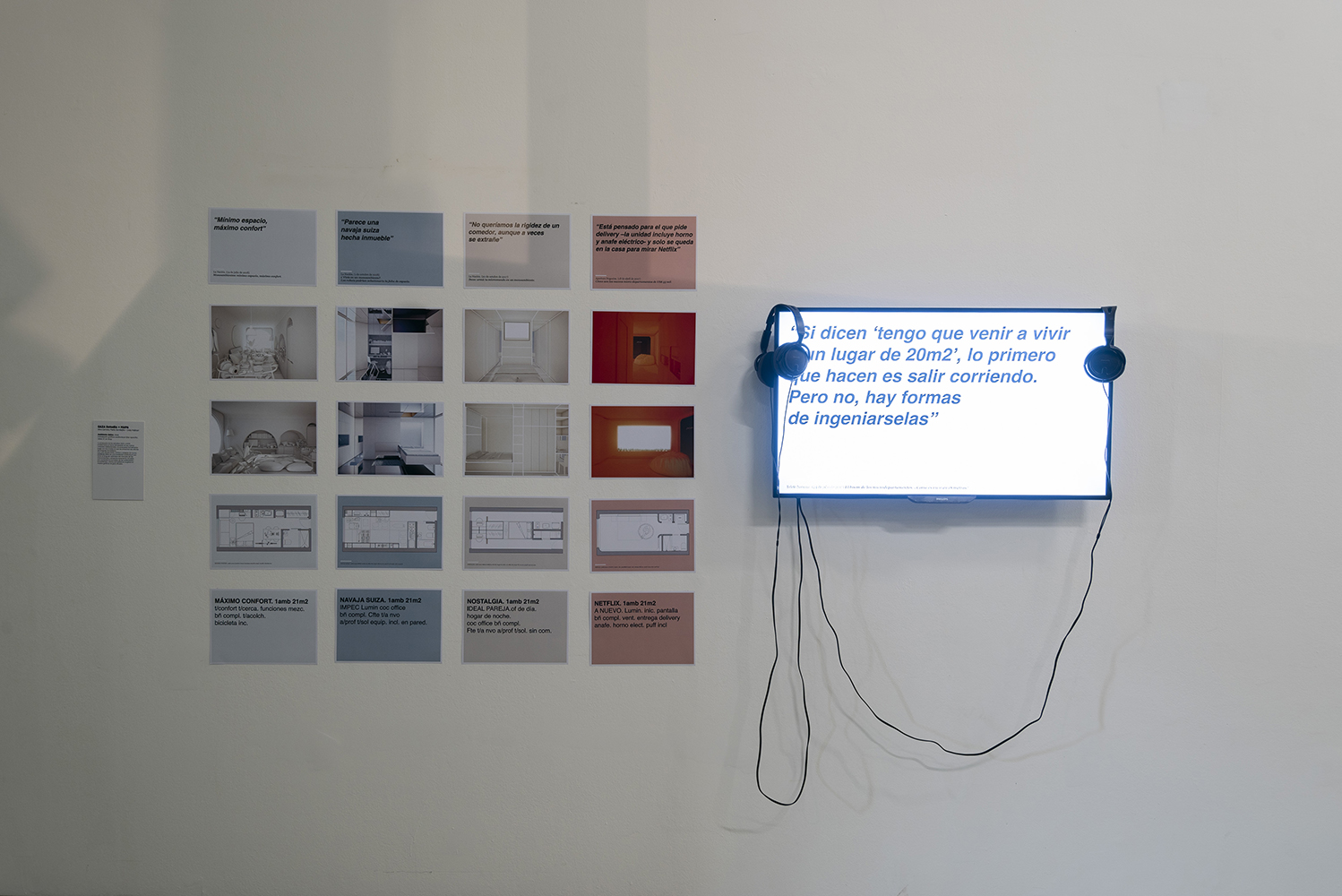
CAZA Estudio + MAPA. Nina Carrara, María Zamtlejfer + Inés Molinari
Ambiente único, 2019. Instalación gráfica-audiovisual Site-specific; video 6 en loop
Ver video
FRAM arquitectos. Franco Riccheri, Agustín Mendiondo
Nueva Unidad Mínima, 2019.
Perfiles de chapa galvanizada, placas de roca de yeso, pintura acrílica, selección de objetos domésticos pintados.
Instalación Site-specific; 312 x 760 x 260 cm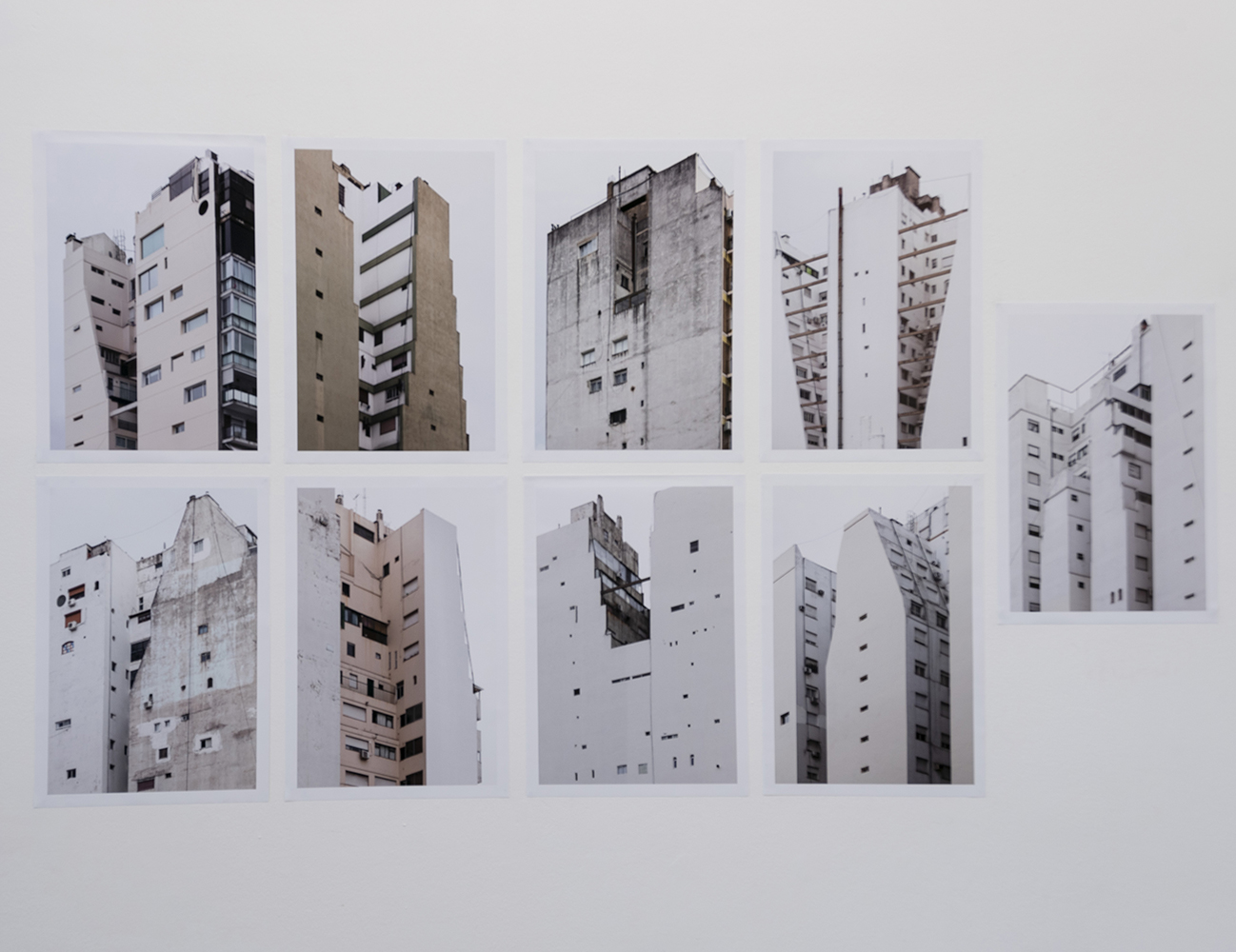
Javier Agustín Rojas
Aire y luz, 2018, de la serie homónima. Fotografía digital, toma directa impreso sobre papel fotográfico mate 40 x 60 cm c/u / 405 x 60 cm (serie)
Law Nº 27,424 ? Law for Distributed Generation
Ideology rarely evolves at the same pace as our technology. That?s one of the roles of
design: to prototype the cultural implications of all possible futures.
Liam Young
A Year in Architecture
The Law for Distributed Generation, approved by Congress towards the end of 2018, instates a fundamental change in the national energy industry by introducing a new participant: the user-generator. Up until then, only specialized providers could produce and commercialize energy by distributing it to end users through the national electrical grid. The law now allows domestic, commercial and industrial users to become energy providers and obtain remuneration from their contribution to the electrical supply, with the condition that the energy they produce comes from renewable sources such as wind, solar, hydropower, biomass and biogas.
With the alleged purpose of diversifying the national energy matrix through the promotion of renewable resources, one of the goals of the law is to to mitigate the crisis in which the the national energy grid has been steeped in for many years. An overburdened system due to a lethal combination of poor planning, disinvestment and a total lack of awareness on the part of users regarding the impact of their energy usage, which amounts to a third of total consumption. A law seeking to establish self-sustainability and, most importantly, the commercialization of excess energy production as a cooperative financial structure to fend off the crisis is, without doubt, an ideal proposal. Furthermore, a collateral effect would be to trigger a paradigm shift in the domestic setting: for the first time, waste would cease to be the only household contribution to the public system, positively adding energy from renewable sources as well.
Once again, the law focuses on lengthy and bureaucratic regulation regarding access to the benefits of the system, while lacking in specifics about its actual physical implementation. Regardless of panels, wind turbines, injectors and bidirectional meters (that measure consumption and supply), the law opens the door to new business opportunities. Set at the individual level, these opportunities imply a series of positive and negative consequences on the collective level. Just as the power lines criss-crossing our streets, the satellite dishes protruding from building fronts, the air conditioning units exuding foul vapours into the air while dripping onto the sidewalk and the illegal windows and advertisements jostling on the walls that flank our avenues, in a near future we?ll see a proliferation of panels and similar devices which, hanging from balconies and rooftops, will struggle to catch a splash of sunlight or a warm urban breeze to keep up their productivity.
Design will then rise to the spotlight with articulated models for the deployment of this technology, articulating its vocabulary in concealed structures like the electric power and sewer systems, or it will once again fall victim to the uncontrollable power of the informal, deregulated and individualistic expansion which always besets it. How can a law regulate the shadows our neighbours project on our light-capturing devices? How can the design of a building favour wind paths that can feed our domestic wind turbines and thus secure necessary consumption, or better still the surplus value of our excess product? Must the designer come up with formal and relational variables to generate an egalitarian system worthy of the responsible generation of resources? Design has the power and also maybe the duty to give visibility to possible conflicts which the law, in its idealism, decides to ignore.
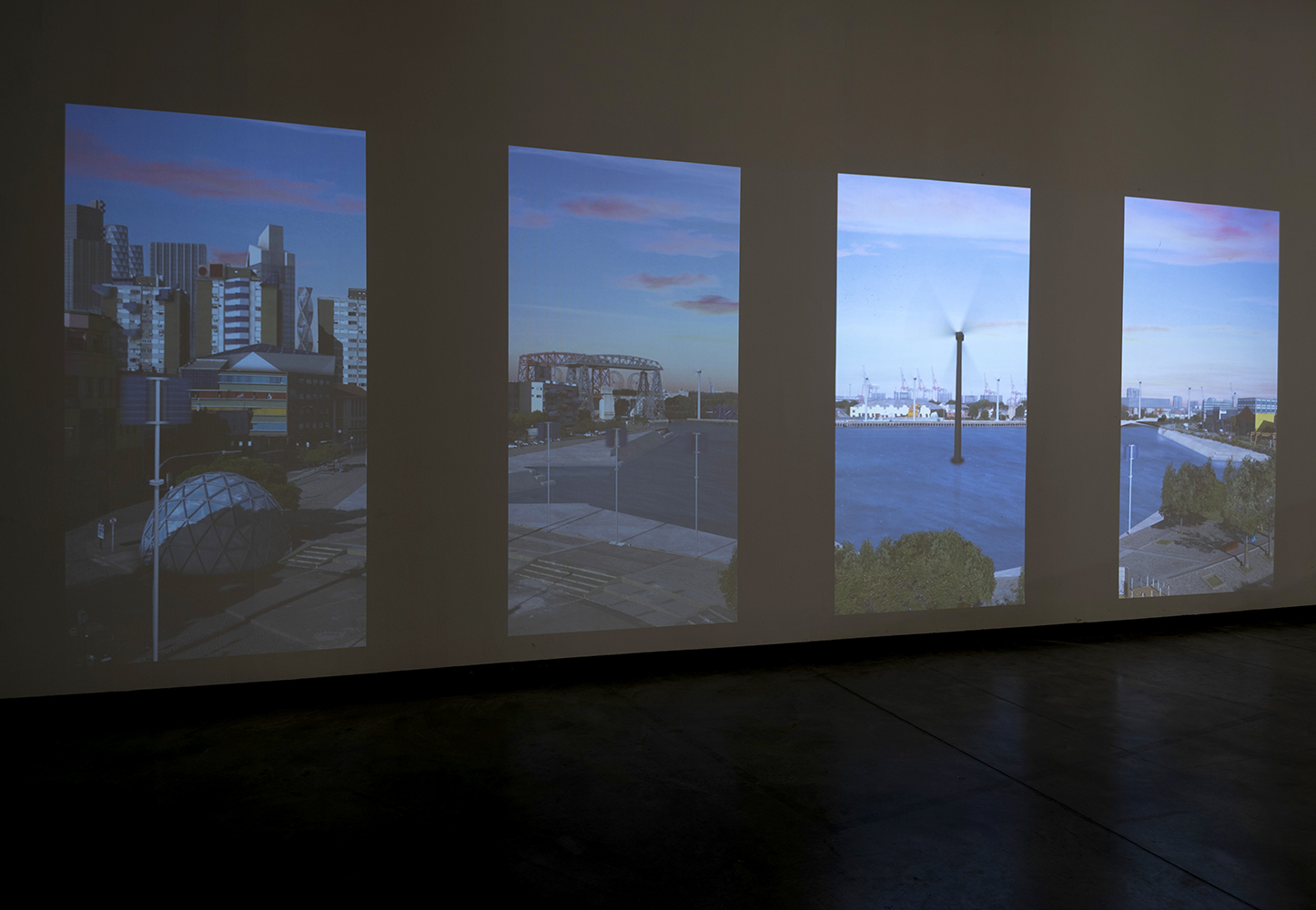
CCPM Arquitectos. Constanza Chiozza, Pedro Magnasco
Instalación audiovisual Site-specific; video 410 en loop. Producción audiovisual: Romina Fontana alias Romiko Tchan. Animación: Germán Katz / Registro: Martín Flugelman. Colaboración: Candelaria Gomez Smurra
Ver video
OBJECTS
A ceramic horizonBy Olga Martinez
The discovery of ceramic’s potential dates from prehistory, from the first experiments with clay and its reaction to water or heat, all the way to the introduction of the potter’s wheel (first fixed, then spinning) and finally the various results obtained by firing at different temperatures. The contemporary creators in this room explore several of these processes, attesting not only to the current applications of ceramic materials but also to their potential for experimentation and to their future possibilities.
From kitchen utensils to crockery, from bricks and tiles to sanitary ware, plumbing, cladding and decoration. The list goes on and covers many other areas, including the industrial and technical fields, where the properties of clay materials (porosity, thermal resistance, hardness, etc.) are utilized to elaborate durable products for the solution of specific tasks. We can find them in burners, electric insulators, water filters and even healthcare products. Ceramic materials and design play a crucial role in all of these.
The artists, ceramists, craftsmen, engineers and designers in this room have chosen ceramic materials for the production of everyday tools and the creation of artistic and experimental forms. They all share an appreciation for the procedural aspect of their specialty, as well as an aspiration to transcend their materials and their disciplinary knowledge.
New technologies such as computer design, 3D printing and CNC milling machines offer new possibilities for the creation of morphologically complex models. The works in the exhibition confirm that ceramics has ceased to be a solely analogue technique and has incorporated digital and robotic technology.
The variety of works showcases the historical and contemporary processes implemented by the creators. From the use of expression and fingerprints in the treatment of matter, present in the works of Santiago Lena and Cristián Mohaded and Leila Córdoba’s “landscape”, to Ruth Gurvich’s transparent industrial porcelain and paper, this series of pieces reveals the presence of individual character at work. On the other hand, Heidi Jalkh, SaV Ceramics and José Huidobro experiment and explore technological and functional designs which can offer new alternatives for the industry.
FASHION
Politics of Fashion
By María Laura Carrascal
Through their creations and in multiple ways, the designers in this exhibition offer an overview of the concerns of contemporary Argentine design. Freedom to pursue our desires, possibilities for technological and scientific innovation, concerns about the environment and decent working conditions are the main issues that have been here translated into fashion design.
In recent years, there has been a growing interest in the concept of responsible consumption, which calls for a reflextion on the social and environmental impact of the fashion production process, from the initial idea to the final production of garments. The goal is to reinstate a bond between creators and consumers who share the same social values and who support and strengthen a national and sustainable fashion industry. Furthermore, the incorporation of new technologies holds a promise for the industrial development for the country, a promise that will be evaluated by the success or failure of such development. Likewise, the discussions about the many ways in which we can experience our bodies, our sexuality and our gender offer a wide range of possiblities to concieve ourselves as legal persons who can exercise the freedom to live according to our personal desires.
The designers in this collective exhibition take on some of the issues of contemporary design and revisit the notion of luxury through various conceptual angles. Sustainability, new technologies and confrontation of the gender binary are not fixed, isolated topics: the designers tackle them simultaneously. It takes a considerable effort to produce these types of creations, and fashion—as well as other industries—is inevitable linked to the convolutions of Argentine political history, which has oscillated between the promotion and the erosion of our national industry.
The aim of this section is to demonstrate that the configuration of a personal style challenges the notion of “trend”, unveiling its true objetive: irrational and excessive consumption. In responde to it, the participating creators structure their work around the seasonal calendar, utilizing seasonal materials and persisting on their personal approach. The goal of their working methods is citizen empowerment, the postulation of a socially responsible individual who has a personal relationship with the world and whose clothing implies yet another way of doing politics.
